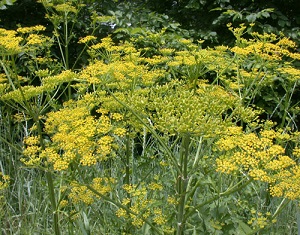A friend of mine posted this information about the Wild Parsnip plant today on my Facebook feed. I have seen this plant many times but never knew it could cause such a violent skin reaction, let alone kill a horse. – Linda P
Wild Parsnip (or Water Hemlock)
Wild parsnip or water hemlock is one of the most deadly of poisonous plants that grow in the fields or open range country. In Colorado it is usually found growing on ditch banks or in meadows. The common garden parsnip, as well as the cow parsnip, are related but quite different plants and are not dangerous to livestock. When a garden parsnip escapes from cultivation and grows wild it does not become poisonous. All parts of the plant are poisonous but more especially the root stalks The poison is a resin known as toxin.
The root and stem of one plant will kill a horse in an hour. After a horse has eaten wild parsnip he will manifest symptoms of violent colic within a few minutes. He soon develops symptoms of cerebral frenzy, saliva flows from the mouth, the pupils are wildly dilated and the breathing is labored. The poison in wild parsnip js rapid in its action that any remedy to be effected must be given promptly.
In an animal that can vomit an emetic should be given without delay. Morphine to relieve the terrible pain and melted lard or some other fatly substance may be given. It is doubtful whether permanganate of potash would be effective in case of poisoning by wild parsnip. Prevention consists in the owners of livestock being able to identify the plant and keeping animals away from it. Every year we hear of people, especially children, being poisoned by eating some of the root of wild parsnip. Parents should especially caution children to have nothing to do with this plant.
— Geo. H. Glover, Colorado Agricultural College, Fort Collins, Colo.
To find out more about this plant and how to identify it please visit the Department of Environmental Conservation.

